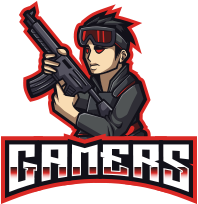Shinobi: Art of Vengeance continues the series’ tradition of blending traditional Japanese aesthetics with futuristic sci-fi and cyberpunk motifs. The crossover of these aesthetics helps give the franchise its identity, and LizardCube honors this history and then some with Shinobi: Art of Vengeance. The character of Ankou is crucial to Art of Vengeance‘s story, and his presence within the game further supports the game’s blending of genres and cultures.
Ankou appears fairly early in the story of Shinobi: Art of Vengeance, acting as a Grim Reaper-like figure and allying with Joe Musashi after Lord Ruse stole his signature scythe. In the lore of Shinobi, the title of Ankou is passed on to the next chosen candidate by relinquishing the scythe to that figure, meaning Ankou is stuck in this role until it can be recovered from Lord Ruse. The real-world history and mythology behind Ankou come through in Shinobi: Art of Vengeance, and this presence creates a unique balance between Eastern and Western mythology.
Shinobi: Art of Vengeance Balances Eastern and Western Traditions with Ankou
The Mythology Behind Shinobi: Art of Vengeance’s Ankou
Despite the Shinboi series’ clear Japanese inspiration, Ankou is best known as a figure within Cornish, Breton, and Welsh mythology. According to its mythological roots, Ankou embodies the iconic vision of the Grim Reaper: a figure cloaked in black, with their face obscured, and wielding a large scythe. Ankou is also known for riding a carriage being pulled by four black horses, a detail that Shinobi: Art of Vengeance goes out of its way to include.
Like in the lore of Art of Vengeance, the real-world mythological version of Ankou is said to be the soul of a deceased individual who has been tasked with collecting other souls and ushering them into the afterlife. In other depictions of the entity, Ankou is the watcher of graveyards, protecting the dead in their final resting places. While Japanese mythology includes a similar psychopomp figure in the form of the Shinigami, or death god, the choice to pull Ankou from British mythology allows Art of Vengeance to bridge a new gap that feels right in line with the spirit of the Shinobi series.
Ankou Feels Right at Home Within Shinobi: Art of Vengeance’s Japan-Inspired World
As players fight their way through some of Shinobi: Art of Vengeance‘s very clearly Japan-inspired levels, like Neo City, Lantern Festival, and Fish Market, finding and tackling hidden Ankou Rifts gives players a taste of Western mythology in the midst of the game’s Eastern flair. These Ankou Rifts showcase the figure in all his glory and detail, with his iconic carriage and black horse in tow. The challenges of these rifts lean into Shinobi: Art of Vengeance‘s movement and Ningi skills, serving as an additional point of contrast with the combat-focused segments of the game’s main levels.
While these Ankou Rifts can be tough to find and even tougher to complete, players would be wise to take on the challenge since finishing these bonus levels nets players Dark Katana fragments that can be combined into a new weapon for Musashi once all are obtained.
The culmination of this cross-cultural design comes with the Dark Katana fragment collectible that players can earn by completing Ankou Rifts. Taking a figure from English mythology and having them govern a distinctly Japanese aspect of Shinobi: Art of Vengeance is the ultimate blend of two different mythologies, and it comes together for a unique aesthetic that carries a tradition the Shinobi series is known for. Not only does Shinobi: Art of Vengeance carry the torch for the series’ genre-blending history, but it establishes a new direction the series can take by adapting more world mythologies and bringing unique lore into the fold.
#Art #Vegeances #Ankou #Blends #RealWorld #Mythology




